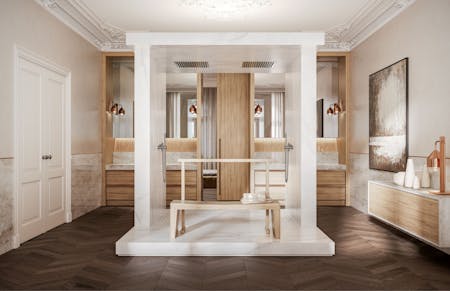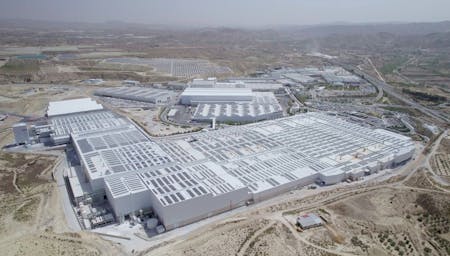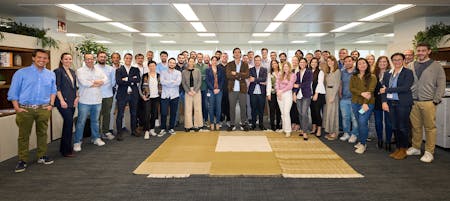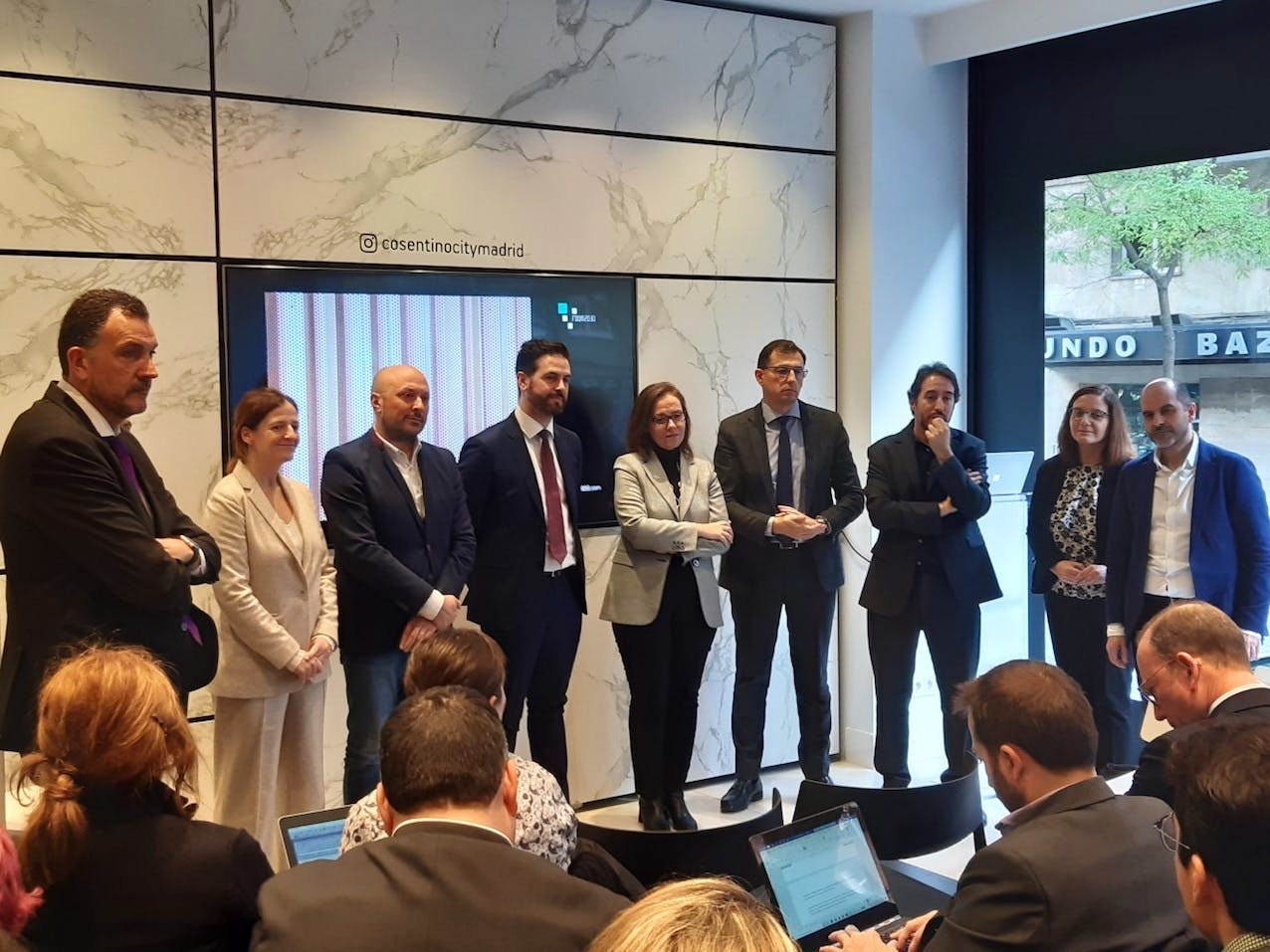
Cosentino joins Room 2030, the room of the future
Tags: Cosentino, Dekton Slim | 4 years ago | Written by: Cosentino
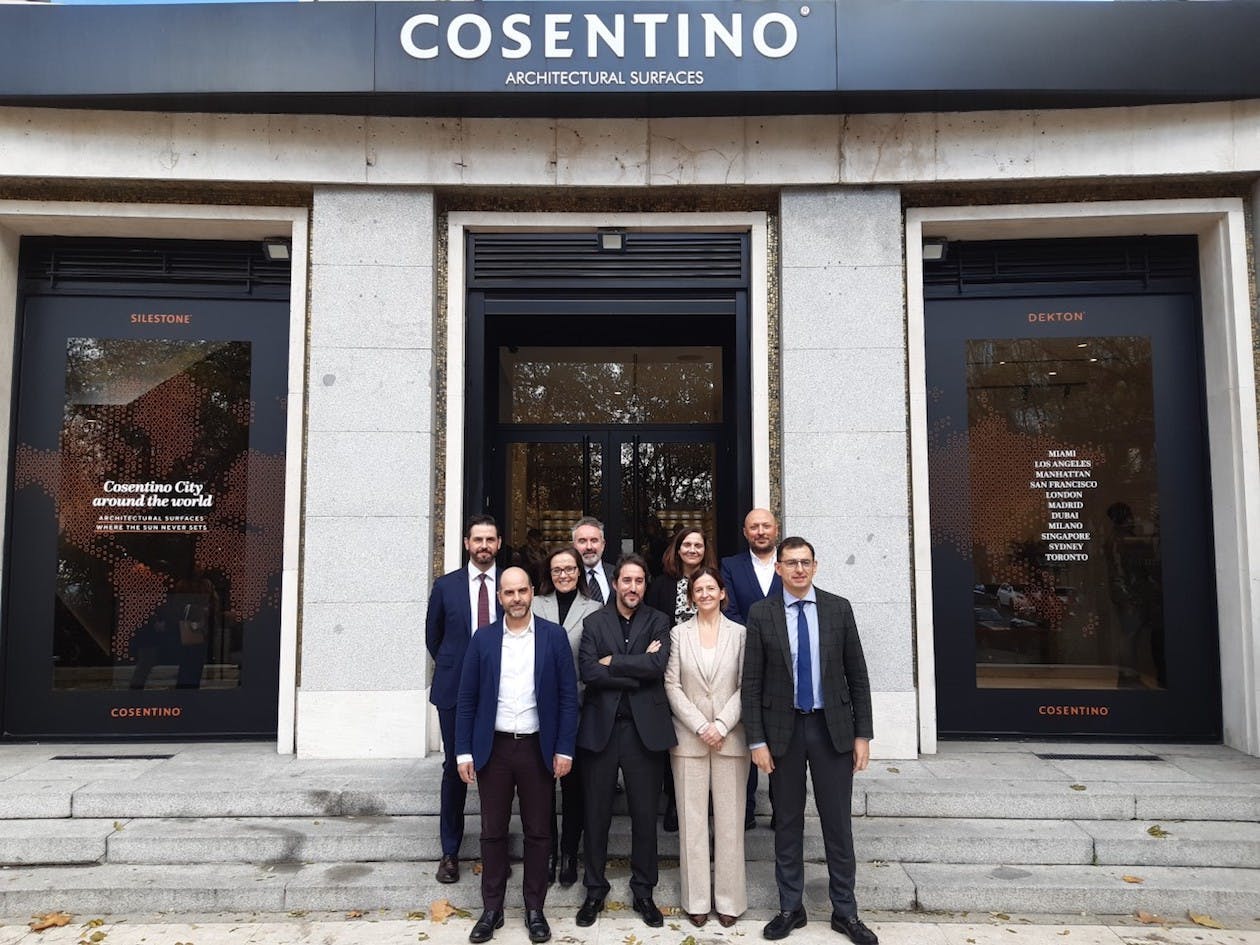 Cosentino Group has come together with ArcelorMittal, Ecus, Estudio Baraga?o, Geopannel, NormaGrup, Roca, Saint-Gobain, Hotel Palacio de Avilés (as the user partner) and Jansen (as the supply partner) to create the Room 2030 consortium, whose aim is to design and build the room of the future. The innovation and technology departments of these companies have managed to integrate their most advanced products and livability solutions into one module.
Cosentino Group has come together with ArcelorMittal, Ecus, Estudio Baraga?o, Geopannel, NormaGrup, Roca, Saint-Gobain, Hotel Palacio de Avilés (as the user partner) and Jansen (as the supply partner) to create the Room 2030 consortium, whose aim is to design and build the room of the future. The innovation and technology departments of these companies have managed to integrate their most advanced products and livability solutions into one module.
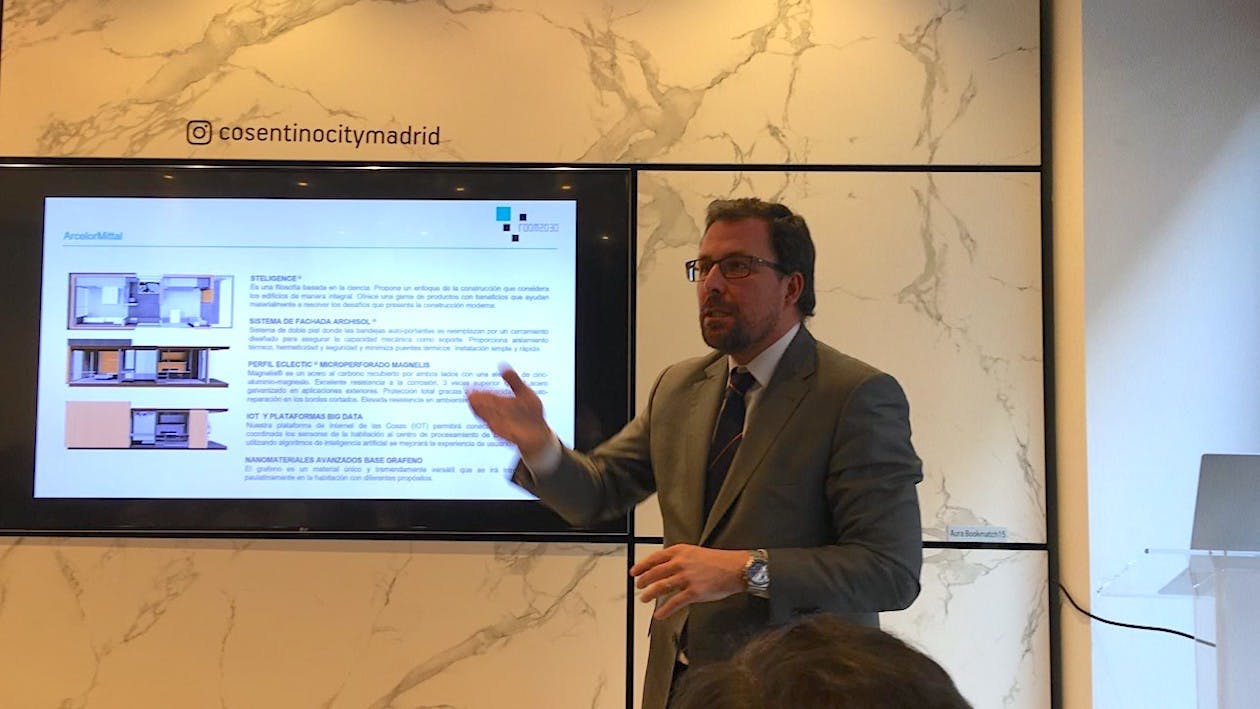 The presentation of the Room 2030 technology consortium took place at Cosentino City Madrid, with representation from each of the member companies. The event was also attended by Raül Blanco, Spanish Secretary of State for Industry. Cosentino was represented by Vanessa Feo, Head of International Communications and Public Relations.
The presentation of the Room 2030 technology consortium took place at Cosentino City Madrid, with representation from each of the member companies. The event was also attended by Raül Blanco, Spanish Secretary of State for Industry. Cosentino was represented by Vanessa Feo, Head of International Communications and Public Relations.
 This first module, the result of the cooperation between the companies' innovation and technology departments, will be installed in mid-January at the Niemeyer de Avilés Centre (Asturias). Room 2030 can be visited and used, so that the technological solutions integrated in the module will tested in a real environment and the interaction with users can be evaluated.
Room 2030 is both an experimentation laboratory for the solutions and products developed by the consortium companies (living lab), and an open innovation platform. This makes it possible to identify solutions beyond the consortium partners, with the contribution, for example, of research taking place at the university, research centres, startups, etc.
This first module, the result of the cooperation between the companies' innovation and technology departments, will be installed in mid-January at the Niemeyer de Avilés Centre (Asturias). Room 2030 can be visited and used, so that the technological solutions integrated in the module will tested in a real environment and the interaction with users can be evaluated.
Room 2030 is both an experimentation laboratory for the solutions and products developed by the consortium companies (living lab), and an open innovation platform. This makes it possible to identify solutions beyond the consortium partners, with the contribution, for example, of research taking place at the university, research centres, startups, etc.
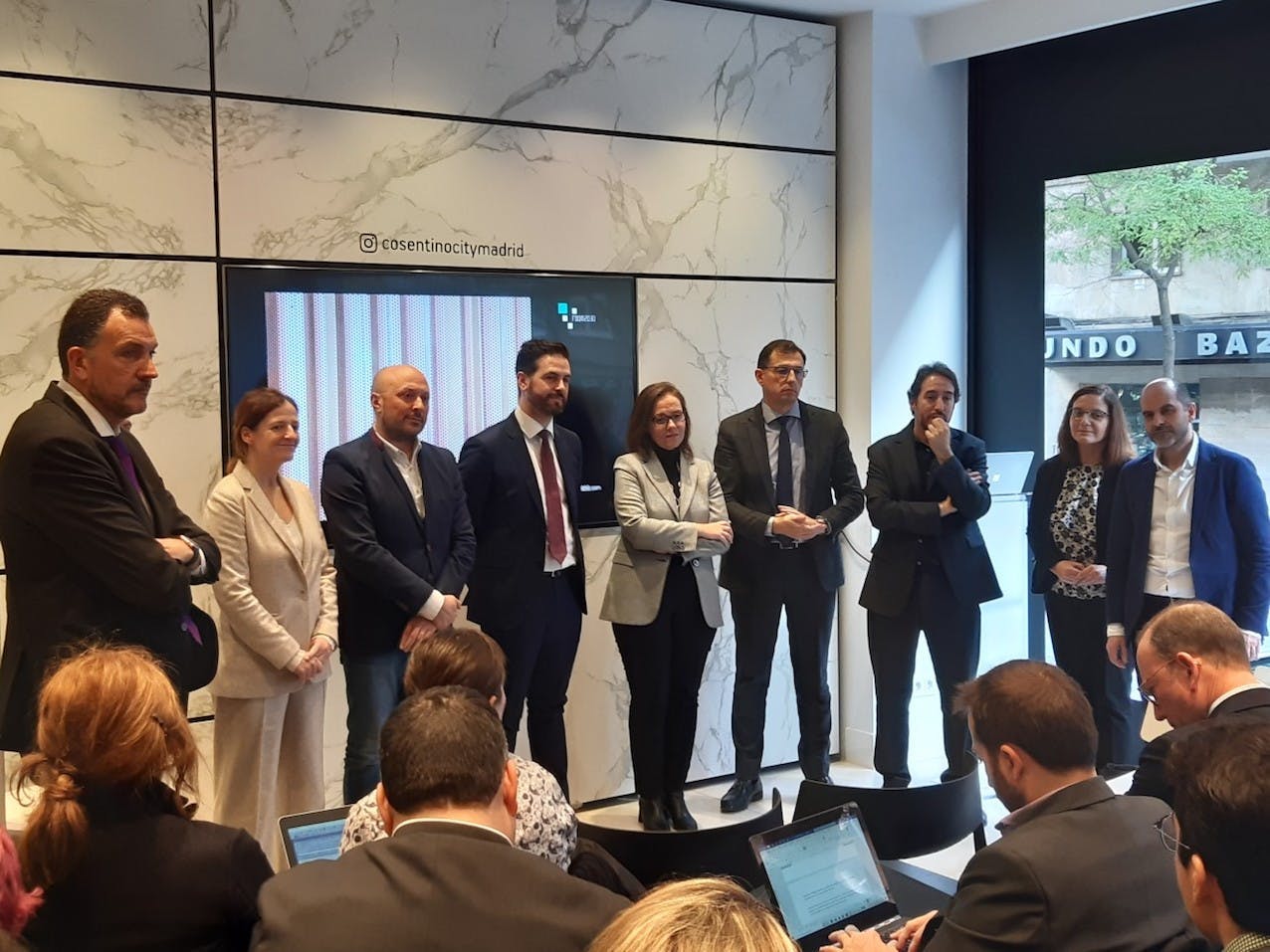 The combination of industrial partners and user partners (the hotel) allows technological innovations to be tested in a real environment and adds unprecedented value to the laboratory. Room 2030 responds to sustainability, connectivity, health, flexibility and permanent innovation demands by integrating the latest technology to improve people's lives and living space.
Room 2030 aims to become a modular industrial construction solution that incorporates new materials and disruptive technologies, with the purpose of, in the first instance, transforming the way in which rooms are built for hotels, and later for other types of social facilities. This solution could be marketed globally.
Dekton® Slim in Room 2030
In the case of Cosentino, the revolutionary ultra-compact 4 mm thick Dekton® Slim can be seen in the room of the future. This revolution for the architecture and design sector offers a surface whose format and lightness makes it suitable for applications where materials which are both lightweight and high-performance are needed. Examples include kitchen furniture coverings, walls, flooring, bathroom ceilings, as well as exterior ceilings or floors. Thanks to its modular fixing system, Dekton® Slim allows the applied coating pieces to be easily replaced, completely modifying the aesthetics of the space.
In Room 2030, the combination of Dekton® Slim with AcerlorMittal graphene ink gives the ultra-compact surface radiant coating qualities, maximum energy efficiency and a minimalist and functional design.
Other innovations
In Room 2030, other innovations can be seen such as mobile modular elements in the design, 3D metal fabrication, natural and recyclable materials, toilets without a cistern, recreation of natural light inside, health-promoting lighting systems, glass that becomes opaque or transparent depending on user needs, a new rest concept, automation, voice control, Internet of Things, etc. Technological elements have been sought that promote the maintenance and replacement of components, as well as highly accessible and non-invasive technology, that keeps the user constantly connected with nature and guarantees their well-being.
Origin of the idea
The origin of the consortium dates back to 2014, when the B-home, a modular construction demonstrator, designed in collaboration with the Baraga?o architecture studio, was installed at the ArcelorMittal R&D centre in Avilés. In 2018, the Palacio de Avilés hotel (in the world's Top 10 NH Hotels), needed to expand its number of rooms. In total, the new expansion has 22 rooms and a twenty-third will be added, which will act as a laboratory for the technologies to be implemented in the 22 previous rooms of the hotel expansion project.
The duo made up of the creative partners behind the idea, ArcelorMittal and Estudio Baraga?o, then invited leading companies in their sector to participate in the consortium to test their technologies linked with a hotel room. The first meeting of the consortium was held on 24 April 2019 at the ArcelorMittal R&D headquarters in Avilés. Since then, they have worked together to create a first module, which will be tested in this same city, specifically in the Niemeyer Centre, a cultural complex that represents the only work by Brazilian architect Oscar Niemeyer in Spain.
PR_Cosentino joins Room 2030
The combination of industrial partners and user partners (the hotel) allows technological innovations to be tested in a real environment and adds unprecedented value to the laboratory. Room 2030 responds to sustainability, connectivity, health, flexibility and permanent innovation demands by integrating the latest technology to improve people's lives and living space.
Room 2030 aims to become a modular industrial construction solution that incorporates new materials and disruptive technologies, with the purpose of, in the first instance, transforming the way in which rooms are built for hotels, and later for other types of social facilities. This solution could be marketed globally.
Dekton® Slim in Room 2030
In the case of Cosentino, the revolutionary ultra-compact 4 mm thick Dekton® Slim can be seen in the room of the future. This revolution for the architecture and design sector offers a surface whose format and lightness makes it suitable for applications where materials which are both lightweight and high-performance are needed. Examples include kitchen furniture coverings, walls, flooring, bathroom ceilings, as well as exterior ceilings or floors. Thanks to its modular fixing system, Dekton® Slim allows the applied coating pieces to be easily replaced, completely modifying the aesthetics of the space.
In Room 2030, the combination of Dekton® Slim with AcerlorMittal graphene ink gives the ultra-compact surface radiant coating qualities, maximum energy efficiency and a minimalist and functional design.
Other innovations
In Room 2030, other innovations can be seen such as mobile modular elements in the design, 3D metal fabrication, natural and recyclable materials, toilets without a cistern, recreation of natural light inside, health-promoting lighting systems, glass that becomes opaque or transparent depending on user needs, a new rest concept, automation, voice control, Internet of Things, etc. Technological elements have been sought that promote the maintenance and replacement of components, as well as highly accessible and non-invasive technology, that keeps the user constantly connected with nature and guarantees their well-being.
Origin of the idea
The origin of the consortium dates back to 2014, when the B-home, a modular construction demonstrator, designed in collaboration with the Baraga?o architecture studio, was installed at the ArcelorMittal R&D centre in Avilés. In 2018, the Palacio de Avilés hotel (in the world's Top 10 NH Hotels), needed to expand its number of rooms. In total, the new expansion has 22 rooms and a twenty-third will be added, which will act as a laboratory for the technologies to be implemented in the 22 previous rooms of the hotel expansion project.
The duo made up of the creative partners behind the idea, ArcelorMittal and Estudio Baraga?o, then invited leading companies in their sector to participate in the consortium to test their technologies linked with a hotel room. The first meeting of the consortium was held on 24 April 2019 at the ArcelorMittal R&D headquarters in Avilés. Since then, they have worked together to create a first module, which will be tested in this same city, specifically in the Niemeyer Centre, a cultural complex that represents the only work by Brazilian architect Oscar Niemeyer in Spain.
PR_Cosentino joins Room 2030
